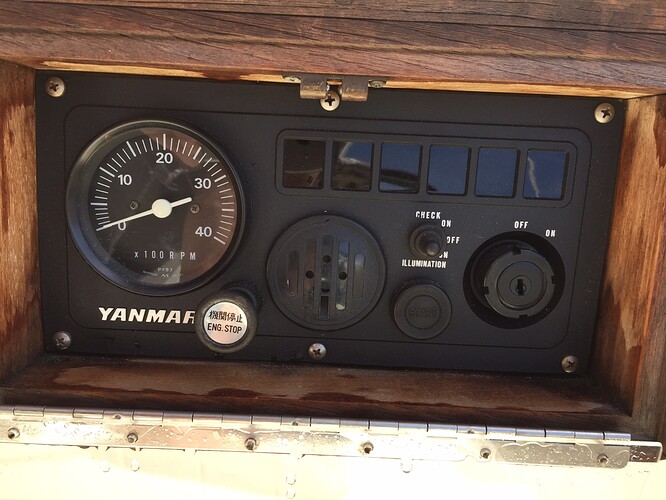svshaula Wrote:
Scott,
If water was getting back in the cylinders, it
seems like you’d see evidence of it in the lube
oil. I’ve never had water in the cylinders of our
1988 3GM30F (knock on wood!), but from what I’ve
heard, it’s not easy to get it out. I hear tales
of removing each injector and siphoning out the
water through a straw?? Anyway, it sounds like
your engine runs just fine, and the problem is
just with starting.
Did the compression lever difficulty persist?
Not sure, will ask next time I call the yard, I did tell them about it when I gave them the job.
Did
the Yanmar mechanics fix it?
No mention of it from them one way or the other.
I wonder if the
engine acted up for the mechanics?
No, they said it started and ran normally – but given that it was an intermittent problem I am not particularly reassured!
Is it possible that the problem could be caused by
not enough current getting to the starter motor?
The battery voltage may be OK but there could be
resistance in the wiring that reduces the current
flow to the starter motor.
Well, the solenoid engages normally and its relay contacts are not accessible for inspection or cleaning like many oldtime solenoids, so I bought a new backup solenoid and will swap it with the existing one if the problem recurs.
Is your starter battery
in good shape?
Yes, good strong batteries and the problem existed when using either the house bank or the starter battery.
I had trouble starting our 3GM30F several years
ago and decided the wiring and connections between
the solenoid, the key switch and the starter
switch needed to be redone with bigger wire. There
were too many connections to the back of the key
switch.
Yes, this is a significant issue with the Yanmar instrument panel mounted low in the cockpit well – lots of access for salty water there under normal offshore conditions – and notably so when we filled the cockpit one night running from the Abacos to Newport a couple years ago! So I did take it apart when I got to Fernandina and cleaned some nasty green gunky connections. But these only affect the tachometer, the warning lights and power to the solenoid so far as I can tell.
That seemed to improve starting (in warmer
weather). It sounds like this circuit works OK for
you, and that the big cable to the starter motor
from the starter battery might not be delivering
enough current to the starter motor?
Have good clean tight connections and a short run from battery to solenoid relay and thence to the starter. The ground cable was so-so and I retightened it well but the problem continued.
I’m not a mechanic, so I’m just flailing around,
but another possibility might be that your starter
motor has some bad spots (in the commutator or ?)
and is only occasionally able to get the job done?
Starter motors do wear out and some folks do carry
spares (we didn’t when cruising off-shore).
Yup, I discussed this with the starter shop guys and they saw no problem. I do have a spare on board and will swap them if the problem continues to eliminate this possibility.
It
sure sounds like your problem is somewhere in the
start battery to starter motor circuit.
Has been my first guess all along but hard to see where it can be, given that all the elements check out ok thus far. Could possibly be a starter bendix gear to flywheel ring gear interference problem but hard to check that out visually.
Our engine does have over 50,000 hrs on it and it
doesn’t like to start in cold weather (temps in
the 50’s). I’m guessing it’s because there’s wear
in the cylinder walls and piston rings, and it’s
hard to get a seal and compression up until things
have warmed up a bit. Cranking for 5 or 10 seconds
will usually get it started. I’m grateful that the
problem is consistent, not intermittent, like
yours. We don’t use the boat in the winter here in
Seattle so it hasn’t been a problem for us so far.
The warm wx in the Bahamas should help you with
this sort of problem.
Yes, if you look into the archives many years ago Itchen had a hard starting and then a loss of coolant issue which turned out to be due to a very slightly warped cylinder head and leaking head gasket. Planed the head, replaced the gasket and it went from 20- 30 seconds to start in cold weather to 3 to 5 seconds! It’s a tough little engine and most problems are more easily identified and fixed than ours of the moment, alas.
It must be frustrating to not have the boat where
you can deal with the problem yourself. We used to
have a diesel mechanic and BCC owner as a frequent
contributor on the forum but unfortunately he sold
his BCC. You could try and pick the brain of your
local Yanmar (or?) diesel mechanic. Good luck!
Dan Shaula
All good advice, thanks,
